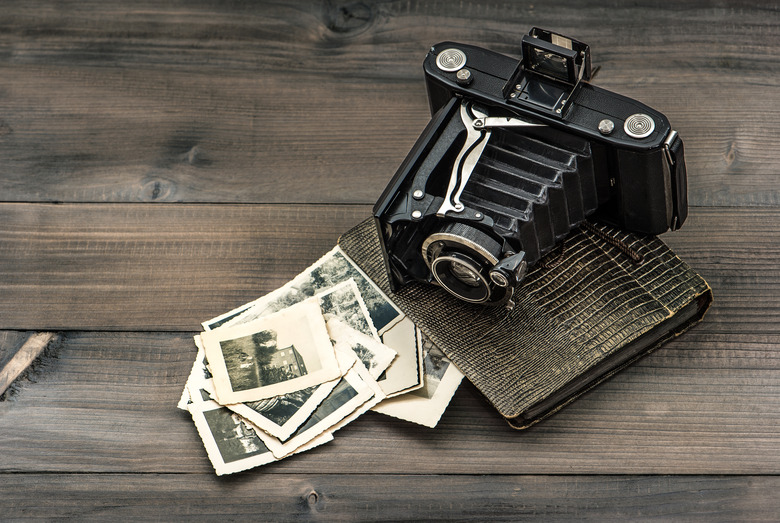The First Camera Invented: How Did It Work?
Mo-Ti, a Chinese philosopher who lived from 470 B.C. to 390 B.C., invented the first camera, which he called the "locked treasure room." His idea refers to what we call a pinhole camera. Aristotle embraced this novel idea 50 years later and applied it to observing sun eclipses without looking at the sun directly. The Egyptian Abu Ali Al-Hasan Ibn al-Haitham (965–1039 AD) revived the pinhole camera about 1,300 years later and thoroughly documented the design and properties in his publication "Book of Optics." Finally, Johannes Kepler added a lens in the early 1600s to downsize the device, and Robert Boyle and his assistant Robert Hooke further refined the concept and made the camera portable in the mid-1650s.
Pinhole Camera
Pinhole Camera
The pinhole camera consisted of a dark room (which later became a box) with a small hole punctured into one of the walls. The light from outside the room entered the hole and projected a luminous beam onto the opposing wall. The illuminated projection showed a smaller inverted picture of the scene outside the room. The smaller the hole, the sharper the image appeared. However, when the hole was too small, the projected image lacked brightness. Hence, there was an optimal hole size that gave enough definition and brightness to the image.
Applications
Applications
The pinhole camera allowed observing the sun, its movement, and its eclipses without looking at the sun directly. Solar systems using the pinhole approach were integrated into architectural constructions to indicate the time of the day. The pinhole rooms were considered educational amusement rooms during the Renaissance. A recent study documented in the Hockney–Falco thesis made an attempt to validate the controversial assumption that several artists of the 17th century used optical technology, such as the pinhole camera, to block the proportions of their paintings as well as port some complex details.
Limitations
Limitations
The pinhole camera works best with immobile sceneries. For a perfectly sharp photo, the hole would need to be infinitely small, which is not a realistic scenario. Hence, the photo from a pinhole camera tends to be slightly blurred. Furthermore, the tiny opening limits the amount of light that can enter the dark room or dark box. To create a bright photo, the opening must remain open for a long time to allow enough light to project onto photosensitive paper. Hence, capturing a person in motion would not be possible with a pinhole camera.
Evolution
Evolution
In 1827, Joseph Nicephore discovered that light from a pinhole camera projected onto an element that blocked shadow and light areas on a metal plate coated in bitumen could create a pattern on the coated plate similar to the shape of the element. This imprint stayed for a few hours. Louis Daguerre joined Nicephore in perfecting the process to shorten the time of exposure and retain the imprint. Finally, in 1939 the daguerreotype invention that used iodine-coated silver-plated copper for the impression and a silver-chloride bath to fix the image was licensed to the French government. This opened the door for modern photography.
Contemporary Relevance
Contemporary Relevance
The pinhole camera remains relevant today to modern technical imaging with X-ray radiation or gamma rays that normally are absorbed by the lenses used in contemporary cameras. Hence the pinhole invention has travelled out of space and been integrated in spacecraft.
Cite This Article
MLA
Gosset, Nathalie. "The First Camera Invented: How Did It Work?" sciencing.com, https://www.sciencing.com/first-camera-invented-did-work-6461766/. 13 March 2018.
APA
Gosset, Nathalie. (2018, March 13). The First Camera Invented: How Did It Work?. sciencing.com. Retrieved from https://www.sciencing.com/first-camera-invented-did-work-6461766/
Chicago
Gosset, Nathalie. The First Camera Invented: How Did It Work? last modified March 24, 2022. https://www.sciencing.com/first-camera-invented-did-work-6461766/
